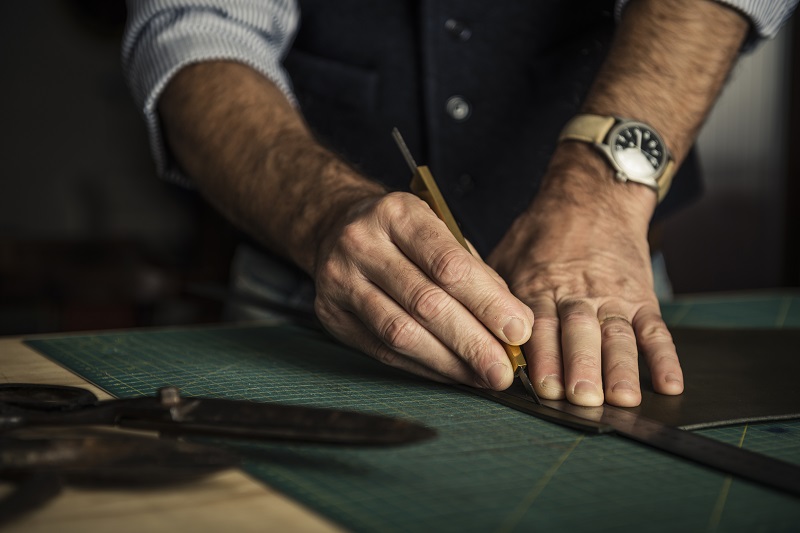
Observations on Design Patent Infringement Damages and Article of Manufacture
By Serena Morones, CPA, ASA, ABV, CFE
I testified as the plaintiff damage expert in Columbia Sportswear’s patent infringement case against the ski glove manufacturer, Seirus Innovative Accessories, Inc. in September of 2017. This case involved some interesting issues regarding the application of 35 U.S.C., § 289, which states: “Whoever during the term of a patent for a design, without license of the owner, (1) applies the patented design, or any colorable imitation thereof, to any article of manufacture for the purpose of sale, or (2) sells or exposes for sale any article of manufacture to which such design or colorable imitation has been applied shall be liable to the owner to the extent of his total profit.”

In Samsung v. Apple[1], decided in December 2016, the Court clarified the meaning of “article of manufacture” as follows:
Arriving at a damages award under §289 thus involves two steps. First, identify the “article of manufacture” to which the infringed design has been applied. Second, calculate the infringer’s total profit made on that article of manufacture.
The text resolves this case. The term “article of manufacture,” as used in §289, encompasses both a product sold to a consumer and a component of that product.
Thus, the Supreme Court provided clarity that a component of a multi-component product can be the appropriate article of manufacture. The Supreme Court did not define a multi-component product, or define a component, except to say that the component need not be available for sale.
In the Columbia case, Columbia accused Seirus of infringing both utility patents and a design patent that related to Columbia’s well-known Omni-Heat Reflective silver dotted lining. Seirus had created its own reflective silver lining called Heatwave, which used a wavy line pattern.
By the time of trial, the judge had already ruled that Seirus’s wavy line pattern infringed Columbia’s asserted design patent, so the only remaining issue to be tried for the design patent was the amount of damages.
Columbia v. Seirus was the first trial after the Supreme Court decision in Samsung and was thus the first case to contend with certain issues relating to the “article of manufacture” inquiry.
Seirus took a position that a glove is a multi-component product, and that the relevant article of manufacture for purposes of a § 289 analysis is the Heatwave lining fabric purchased from a textile manufacturer and sewn into Seirus gloves. Columbia took a position that Seirus’s run-of-the-mill ski gloves were not multi-component products, as distinguished from certain gloves that had separable parts like battery packs and liners. Thus, Columbia asserted that it was not necessary to apportion damages under Samsung v. Apple’s framework.
The damage experts did not offer testimony about whether or not the gloves are multi-component products, nor did they attempt to identify the relevant article of manufacture, but they did offer methods to allocate profits to each party’s asserted article of manufacture.
Seirus’s damage expert asserted that profits derived from the Heatwave component of the glove could be calculated by allocating profits from the glove based on a ratio derived by dividing the purchased material cost of the Heatwave fabric by the total manufacturing cost of each glove. Seirus’s expert did not add any manufacturing labor or manufacturing overhead to the cost of fabric when calculating the cost of the heatwave fabric. By leaving all other glove costs in the denominator and including only the purchased cost of materials in the numerator, the Seirus expert reached the lowest possible profit apportionment ratio under a cost allocation method. This methodology also essentially assumed that labor and other manufacturing and delivery costs are separate “components” of the glove.
I rebutted Seirus’s expert’s allocation method by explaining that it is not rational to treat labor and similar costs as separate components unrelated to the material costs, because the material could not provide any use to a customer unless it was sewn into the glove. I explained to the jury that it would be necessary for Seirus to add labor and manufacturing costs to the fabric before the fabric could ever contribute to revenue generation as a separate component. By excluding an allocation of labor and manufacturing costs to Heatwave fabric in the numerator, Seirus’ allocation of profits earned on the Heatwave component of the glove are understated.
Seirus sold some products that contained only Heatwave fabric. For these products, I would expect that virtually all profits generated by sale of the product should be attributed to the inclusion of Heatwave fabric. However, Seirus’ expert’s allocation method resulted in an allocation of approximately one third of the profit from the product to the Heatwave fabric component, a nonsensical result.

Columbia v. Seirus raised interesting questions about what the proper methodology should be for apportionment of profits to the article of manufacture when using a cost-based apportionment method. Should the cost of a separate component include an allocation of manufacturing labor and overhead?
Columbia attorneys also rebutted Seirus’ cost allocation method by arguing that a cost allocation method gives no weight to the impact of the HeatWave fabric in driving the sale. Columbia asserted that the Heatwave fabric was the most prominently advertised feature of the Heatwave glove and that if the jury found the HeatWave fabric to be the relevant article of manufacture for § 289 purposes, then a reasonable allocation method should consider the value of the patented invention in driving the glove sale, a concept similar to the Entire Market Value Rule under the reasonably royalty remedy. Because Seirus’s HeatWave fabric drove consumer demand for its gloves through prominent marketing of that feature, Columbia’s attorneys argued that, even if the jury found the HeatWave fabric to be the relevant article of manufacture, the profits attributed to the sales of that fabric were the profits earned from the sales of the gloves as a whole.
The damage experts also disagreed on what costs should be deducted from revenues in order to arrive at profits attributable to the article of manufacture. I summarized various categories of direct variable costs that would be necessary to generate incremental profits on infringing sales and arrived at a marginal profit on the Heatwave gloves. Seirus’s expert asserted that other categories of indirect and overhead costs should be deducted.
The jury awarded the full amount of Columbia’s requested marginal profits on all of Seirus’s infringing gloves, thereby disregarding Seirus’ position on the profits attributable to the relevant article of manufacture, and their expert’s opinions regarding deduction of indirect and overhead costs from revenue.
[1] Samsung Elecs. Co., Ltd. v. Apple Inc., 137 S. Ct. 429 (2016).

